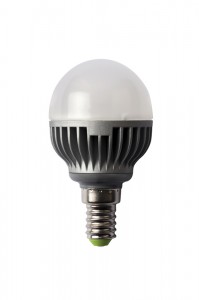 Light emitting diode lighting (LED) technology is widely touted to be a revolutionary way for lighting homes. As such, it is likely to replace the general lighting services in use today that consist of incandescent and fluorescent bulbs. LED lighting differs from conventional lighting in various ways. For starters, LED beams are directional, and tend to focus on specific points. Secondly, LED fixtures consist of combined fitting and bulb components.
Light emitting diode lighting (LED) technology is widely touted to be a revolutionary way for lighting homes. As such, it is likely to replace the general lighting services in use today that consist of incandescent and fluorescent bulbs. LED lighting differs from conventional lighting in various ways. For starters, LED beams are directional, and tend to focus on specific points. Secondly, LED fixtures consist of combined fitting and bulb components.
During replacement, one changes the bulb as well as the entire lighting unit. Many homeowners lack comprehensive knowledge about the intricacies of LED lighting. For this reason, an energy conscious individual may not know where to begin when searching for these handy illumination units. To help solve that problem, here are three tips for homeowners looking to purchase LED lighting sources for their homes.
Uses of the Light Fixtures
The first point to consider when comparing LED lighting sources is their primary usage. As mentioned before, LED light bulbs are directional in nature. Therefore, they perform effectively in areas that require ambient illumination around ones home. As such, homeowners may choose this type of lighting for areas of the bathroom, hallways, kitchen, and basements. Some common LED fixtures that can work well with this technology include the following:
- Spot Lights
- Accent Lighting
- Sconce Lighting
- Recessed Lighting
- Security Lighting
- Decorative Lighting.
Homeowners can choose an appropriate lighting source from the above options, and decide on the best ones to install inside their houses.
Wattage of the Bulbs
LED bulb power ratings differ from conventional bulb wattage. General light service bulbs consume power according to their wattage, and the higher the wattage, the brighter a bulb glows. On the other hand, LED power ratings are quite intricate to calculate. Some LED bulb manufacturers usually indicate wattage, but this value may not represent the true power consumption of the bulb. The actual power consumption of LED light fixtures is relative to various factors, and rather difficult to estimate. Some of the factors that influence LED bulb power consumption include the beam angle of the lighting, LED color rating, and bulb power factor.
Color of the Bulb
LED bulbs are available in various colors just as is the case for normal general lighting services bulbs. However, LED color factor also refers to the “white color factor” of these bulbs. White color factor is the form of illumination the LED light source produces under natural lighting conditions. Manufacturers usually calculate color factor using a unit called Kelvin (K). Yellow and orange LEDs are just under 2000K, white and neutral bulbs have around 4000K, and bluish bulbs have the highest color temperature rating.
LED powered lighting is affordable and energy efficient. Many power companies are gradually developing LED light fixtures for homeowners to use. Knowledge about the application possibilities of these lights is essential to obtain the suitable bulbs for ones residence. Consider the three points detailed above when shopping for this innovative form of lighting.


 Saturday, November 24th, 2012, 3:25 am |
Saturday, November 24th, 2012, 3:25 am | 
